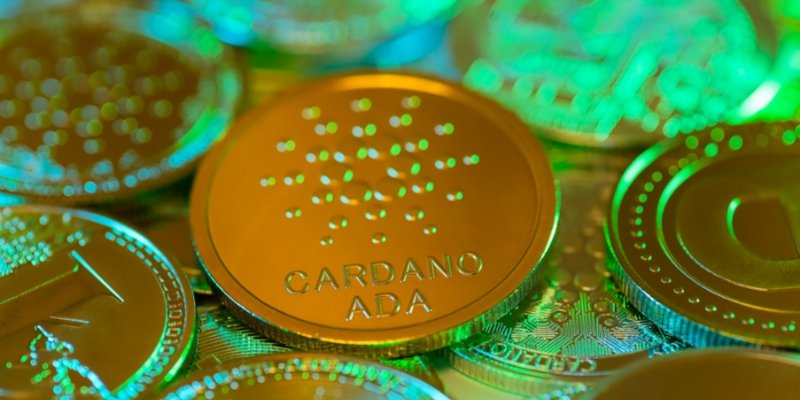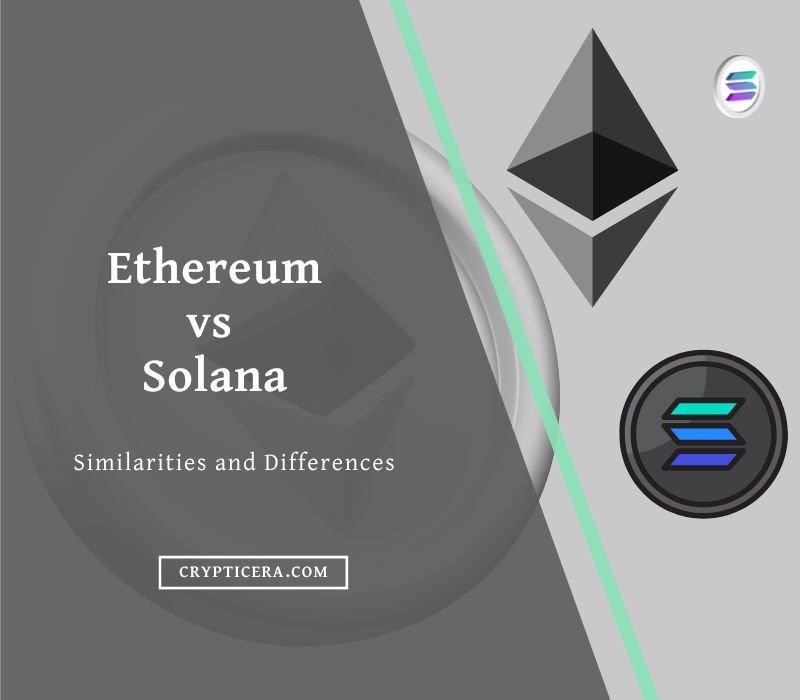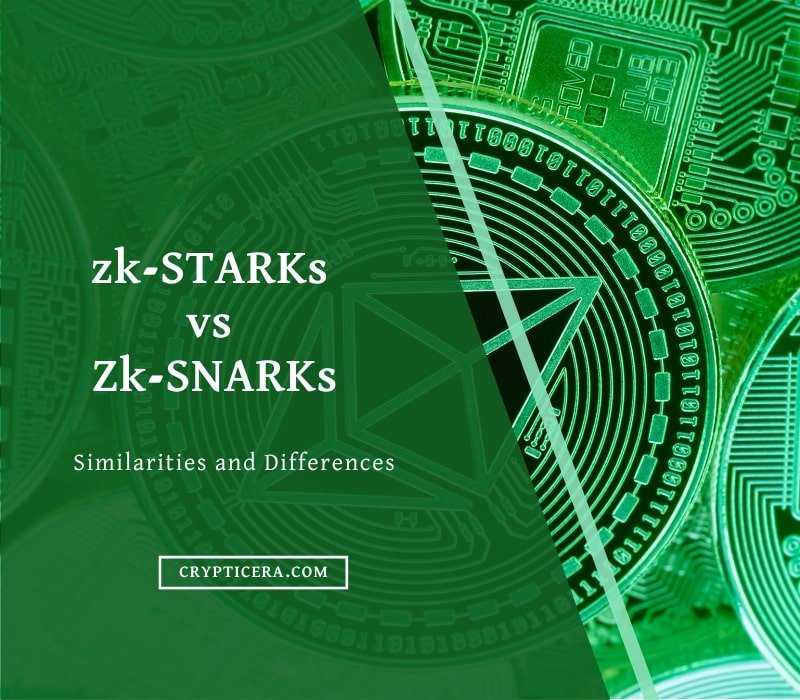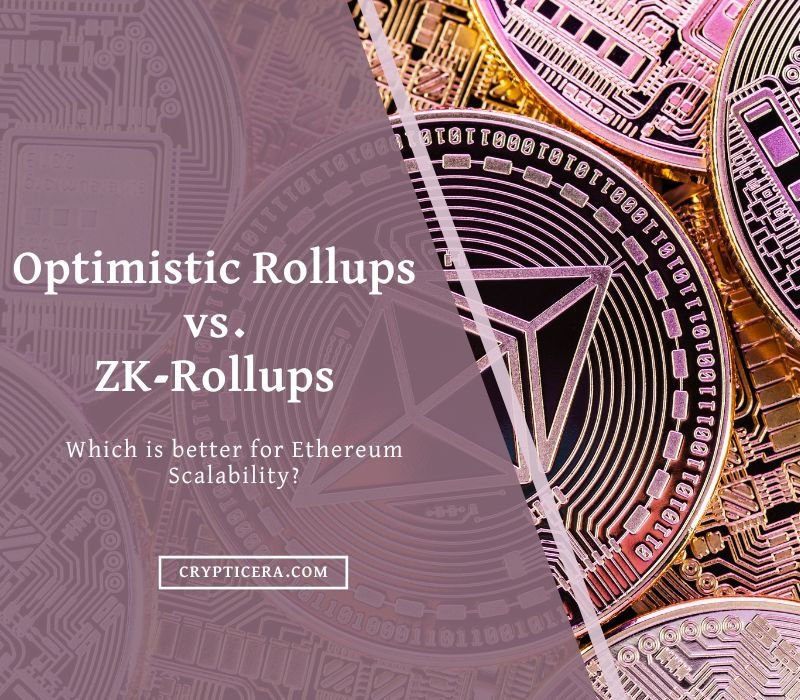Blockchain technology has the potential to revolutionize a wide range of industries and applications.
Two of the most promising platforms in this space are Polkadot and Cardano, which offer innovative solutions for scalability, security, and interoperability.
By understanding the unique strengths and weaknesses of Cardano and polkadot, we can gain insight into the future potential of their blockchain technology and how they revolutionize Decentralized finance.
In this blog post, we will compare these two platforms and explore some of the key differences between them.
Polkadot vs Cardano: The Ultimate Comparison
| Comparison Point | Polkadot | Cardano |
|---|---|---|
| Blockchain technology | Heterogeneous multi-chain | Single chain with PoS consensus |
| Governance | DPoS with an on-chain governance | Decentralized with Cardano Foundation |
| Use cases | Cross-chain communication and interoperability | DeFi |
| Team and community | Strong team with a growing ecosystem | Large and active community |
| Market Cap | $15 billion | $10 billion |
| Security | On-chain and off-chain security measures | PoS consensus and security deposit system |
| Partnerships | Web3 Foundation, ChainX, and Parity Technologies | The Ethiopian government and the University of Edinburgh |
| Scalability | High Scalability | lower scalability |
| Fees | Low fees | low fees |
| Programming languages | The substrate framework allows for use of multiple languages | Haskell as the primary development language |
| Transaction speed | 100,000 TPS | 250 TPS |
| Energy efficiency | Not as energy-efficient as some other cryptocurrencies | PoS consensus is more energy-efficient than PoW mechanisms |
| User experience | User-friendly interface with a range of tools and resources | User experience may vary depending on individual familiarity and specific features used |
What is Polkadot (DOT)?

Polkadot is a blockchain network that is designed to allow for the creation of decentralized applications.
It is a next-generation blockchain platform that is built to be scalable, flexible, and interoperable.
Unlike many other blockchain networks, which are designed to be used for a specific purpose, Polkadot allows for the creation of a wide range of decentralized applications, or “dapps,” on its network.
This makes it a powerful platform for building new, innovative applications that can take advantage of the decentralized nature of the blockchain.
How does Polkadot Work?
The key components of Polkadot architecture are the relay chain, parachains, and parathreads.
Relay Chains
The relay chain is the central component of the Polkadot network. It acts as the backbone of the network and is responsible for maintaining the overall health and security of the network.
The relay chain is also responsible for coordinating the communication and transactions between the different parachains and parathreads on the network.
Parachains
Parachains are independent blockchain networks that are built on top of the Polkadot relay chain. They are designed to be highly scalable and capable of processing a high volume of transactions.
They can also be customized to support a wide range of applications and can be used to create decentralized applications, or “dapps,” on the Polkadot network.
Parathreads
Parathreads are similar to parachains but are designed to be more lightweight and flexible.
They are intended for use cases where the high scalability of parachains is not necessary and can be dynamically added or removed from the network as needed.
Validators
Another key concept in Polkadot is “validators.” These are special nodes on the network that are responsible for maintaining the security and integrity of the network by validating transactions and participating in the consensus process.
Validators are rewarded for their work with tokens, which gives them the incentive to perform their duties honestly and reliably.
What is Cardano (ADA)?

Cardano is a blockchain platform that is built using a unique proof-of-stake consensus algorithm called “Ouroboros,”. It is designed to be more energy-efficient and secure than other proof-of-work algorithms.
One of the key features of Cardano is its emphasis on security and compliance.
The platform is designed to be compliant with a wide range of regulations and has built-in features that allow for the creation of secure and transparent financial applications.
This makes Cardano a powerful platform for building decentralized financial applications, such as digital wallets, exchanges, and payment systems.
How does Cardano Work?
Cardano is composed of two layers: the Cardano Settlement Layer (CSL) and the Cardano Computation Layer (CCL).
The CSL manages transactions and maintains the ledger on the Cardano network using the proof-of-stake consensus algorithm Ouroboros. This mechanism is more energy-efficient and secure than proof-of-work algorithms.
It also enables the creation of a decentralized and secure platform for conducting transactions and managing assets.
The CCL executes smart contracts and runs decentralized applications (dapps) on the network. It uses the functional programming language Plutus. Plutus is easy to use and suitable for formal verification.
This layer is helpful in the creation of customizable, scalable, and interoperable blockchain networks on the Cardano platform.
Polkadot vs Cardano: Key differences
Scalability
Polkadot and Cardano are both highly scalable blockchain platforms. However, they differ in their approaches to scalability.
Polkadot uses sharding to divide its network into smaller chunks called “parachains,” which can operate in parallel for faster transaction speeds.
Cardano, on the other hand, relies on protocol improvements and adoption to scale.
Another difference is that Polkadot is a multi-chain platform, while Cardano primarily supports a single-chain.
This impacts the scalability of each network, with Polkadot able to support a diverse ecosystem of dApps and services, and Cardano relying on the adoption and usage of its own native applications and services.
DApps and Defi
Top Polkadot Ecosystem Coins and Projects
Polkadot is a popular choice among developers because it allows cross-chain communication and interoperability. This is useful for projects that require data sharing across multiple blockchains.
Examples of these projects include decentralized exchanges and identity solutions.
| App | Description |
|---|---|
| DOT | Used for staking, governance, and network transaction fees. |
| KSM | A highly experimental version of Polkadot. |
| Acala | Decentralized finance platform built on Polkadot. |
| Moonbeam | A platform for deploying Ethereum dApps on Polkadot. |
| Plasm | Decentralized computing platform built on Polkadot. |
| Ocean Protocol | Decentralized data exchange web 3 platforms built on Polkadot. |
| Equilibrium | Decentralized finance platform built on Polkadot. |
Top Cardano DeFi Apps
Cardano focuses on DeFi applications and includes smart contracts and other tools for DeFi.
This makes it popular among developers working on DeFi projects like lending platforms, stablecoins, and other financial applications.
| # | Name | Balance | Volume |
|---|---|---|---|
| 1 | Minswap | $38.32M | $69.22M |
| 2 | SundaeSwap | $40.35k | $7.12M |
| 3 | Wingriders | $768.43k | $8.56M |
| 4 | CardanoLands | $1.12k | $54.61k |
| 5 | MuesliSwap | $3.22M | $3.13M |
Smart Contracts Languages
Plutus is a functional programming language designed to create smart contracts on the Cardano platform. It is derived from Haskell, a functional programming language used for various purposes.
Haskell’s presence in Plutus enables the creation of powerful and expressive contracts on Cardano and enables formal verification. This mathematically verifies contract correctness for enhanced security and trust in contract behavior.
In contrast, Polkadot supports various languages, including Solidity, Rust, and WebAssembly, giving developers the ability to choose the language that fits their needs and promoting a diverse ecosystem of dApps and services.
Consensus Mechanism
Cardano’s proof-of-stake (PoS) consensus mechanism allows users to stake their tokens to validate and confirm transactions on the network, making it more energy-efficient and scalable than proof-of-work (PoW) mechanisms.
Polkadot uses nominated proof-of-stake (NPoS), where users must also be nominated by others to become validators and participate in consensus, ensuring trustworthy validators and reducing the risk of malicious behavior.
Algorithm
Ouroboros is the name of the proof-of-stake (PoS) algorithm used by the Cardano blockchain. It is a type of consensus mechanism that determines how transactions are validated on the network.
One of the key features of Ouroboros is its use of “epochs” to divide the process of block creation into smaller, more manageable pieces.
Each epoch is a fixed length of time, and during that time, a certain number of blocks are created.
This allows the algorithm to be more efficient and secure, as it reduces the potential for long-range attacks on the network.
Polkadot uses a different algorithm called “GRANDPA” (GHOST-based Recursive Ancestor Deriving Prefix Agreement) to reach a consensus on its network.
In this algorithm, validators on the network are responsible for proposing new blocks and voting on their inclusion in the blockchain
Energy Consumption
Polkadot uses a combination of on-chain and off-chain security measures to secure its network. This makes it a less energy consumption blockchain.
This is because the on-chain security measures used by Polkadot require a certain amount of computational power, which consumes less energy.
Cardano, on the other hand, uses a pure PoS consensus mechanism, which is also more energy-efficient than other PoS and PoW mechanisms.
This makes Cardano more energy-efficient than Polkadot.
DOT vs ADA: Price Prediction
Note: Price prediction of ADA and DOT is based on machine learning Algorithms and their historical price movements. It does not include any future events such as ecosystem development, blockchain adoption, and regulations. Please do your own research before investing.
ADA Price forecast 2023-2030
As Cardano continues to reach new highs, our algorithm expects from 2023-2030, Cardano can achieve a maximum price of $2.97 in December 2030, while the average price will stay around $1.67. If a bear market appears, the minimum price ADA can reach is $0.667718.
| YEAR | MINIMUM PRICE | AVERAGE PRICE | MAXIMUM PRICE |
|---|---|---|---|
| 2023 | $0.667718 | $0.75877 | $0.849822 |
| 2024 | $0.971226 | $1.06 | $1.15 |
| 2025 | $1.27 | $1.37 | $1.46 |
| 2026 | $1.58 | $1.67 | $1.76 |
| 2027 | $1.88 | $1.97 | $2.06 |
| 2028 | $2.19 | $2.28 | $2.37 |
| 2029 | $2.49 | $2.58 | $2.67 |
| 2030 | $2.79 | $2.88 | $2.97 |
DOT Price Forecast 2023-2030
Considering the adoption of DOT by countries around the world, Polkadot can claim a maximum price of $50.53 by 2030 with an average price of $28.36 expected. Furthermore, the minimum price could be $11.81 in the event of a bear cycle.
| YEAR | MINIMUM PRICE | AVERAGE PRICE | MAXIMUM PRICE |
|---|---|---|---|
| 2023 | $11.34 | $12.89 | $14.44 |
| 2024 | $16.50 | $18.05 | $19.59 |
| 2025 | $21.66 | $23.20 | $24.75 |
| 2026 | $26.81 | $28.36 | $29.91 |
| 2027 | $31.97 | $33.51 | $35.06 |
| 2028 | $37.12 | $38.67 | $40.22 |
| 2029 | $42.28 | $43.83 | $45.37 |
| 2030 | $47.44 | $48.98 | $50.53 |
Conclusion
In conclusion, while both Polkadot and Cardano are highly innovative and scalable blockchain platforms, they differ in key aspects such as their approach to scalability, smart contract languages, consensus mechanisms, and blockchain algorithms.
Each platform has its own unique strengths and may be more suited to certain types of applications and use cases.
Ultimately, the success of these platforms will depend on their ability to attract developers, users, and support from the wider blockchain community.
FAQs
What is the main difference between these two networks?
The main difference between Polkadot and Cardano is that Polkadot is focused on enabling interoperability between multiple blockchain networks, while Cardano is focused on providing a scalable and secure platform for DApps.
Why is interoperability important for Polkadot?
Interoperability is important for Polkadot because it allows different blockchain networks to communicate and exchange data with each other, enabling a more flexible and inclusive ecosystem of blockchain-based applications.
What is Cardano’s approach to scalability and security?
Cardano’s approach to scalability and security is based on a highly sophisticated proof-of-stake (PoS) algorithm called Ouroboros, which uses a randomized, lottery-like process to select validators who are responsible for verifying transactions on the network. This approach is designed to be both efficient and secure.


